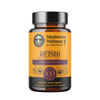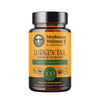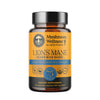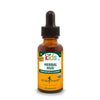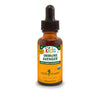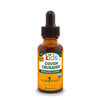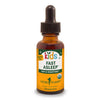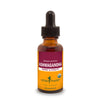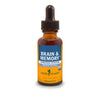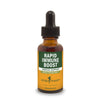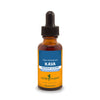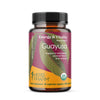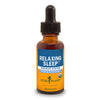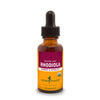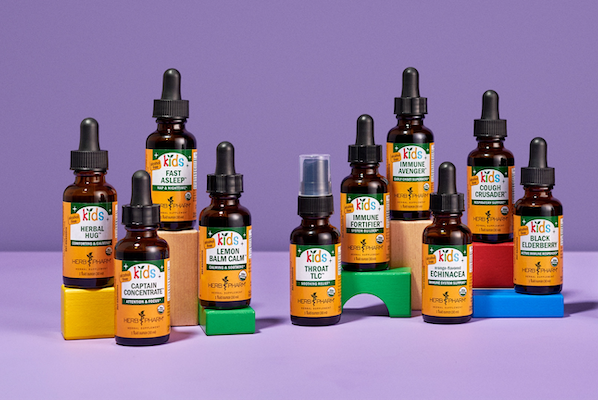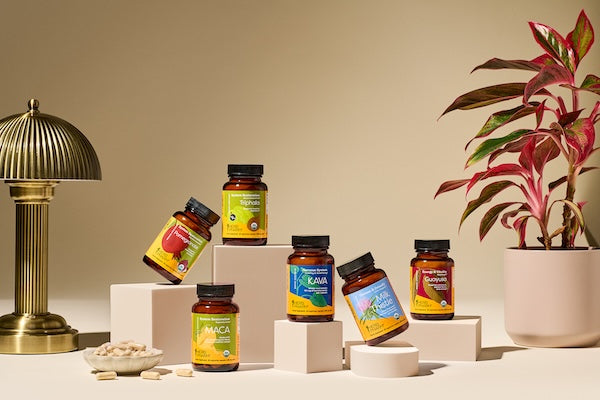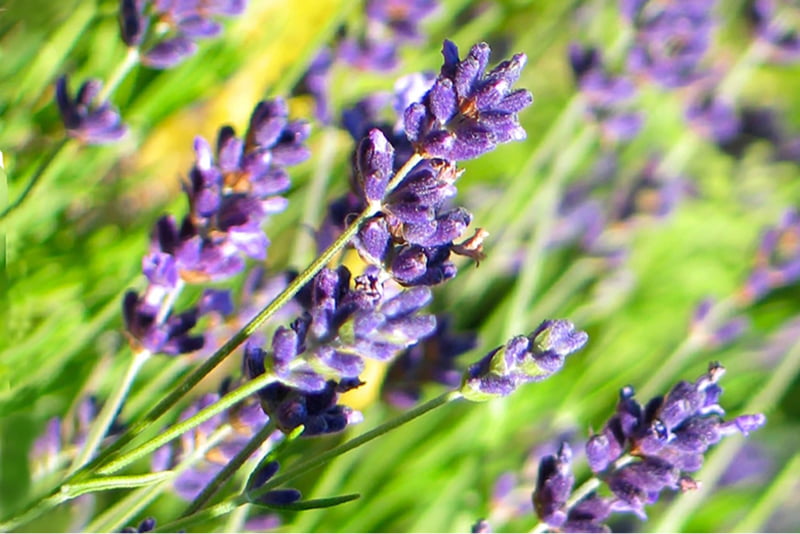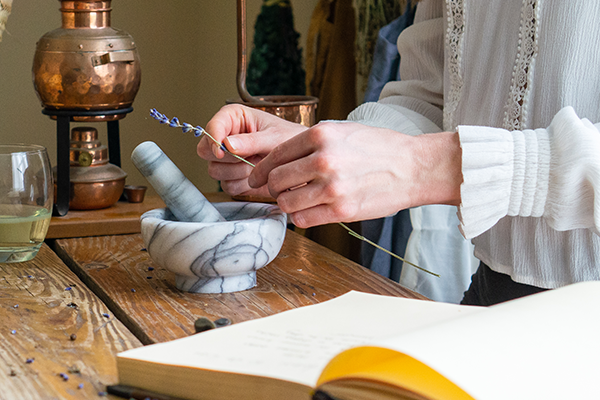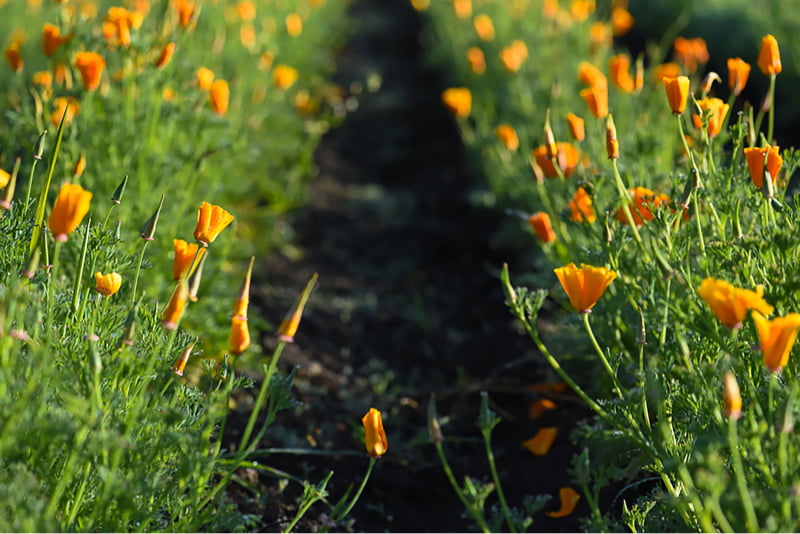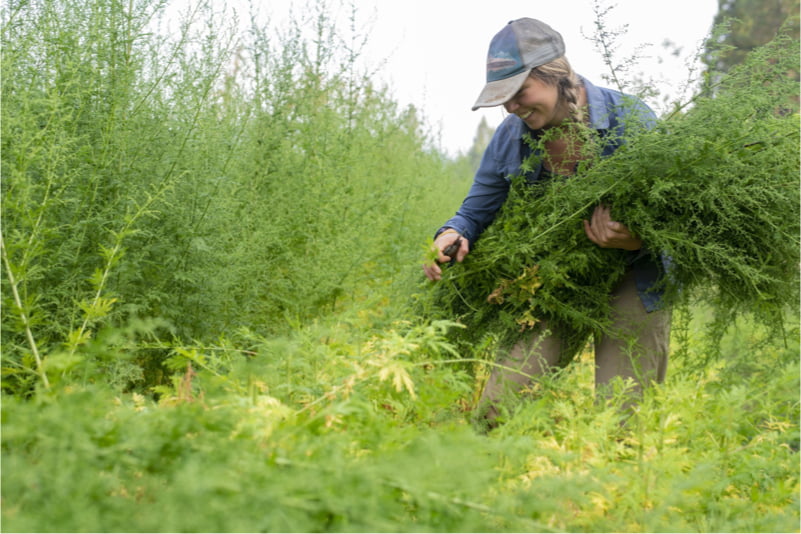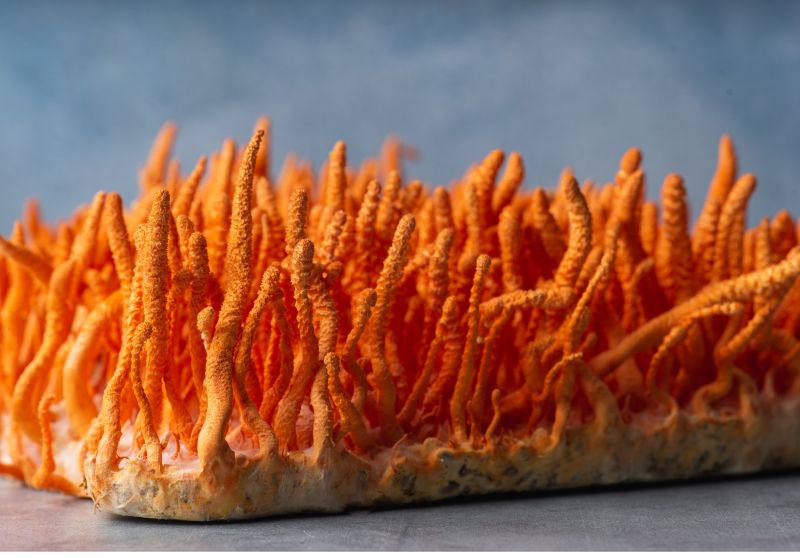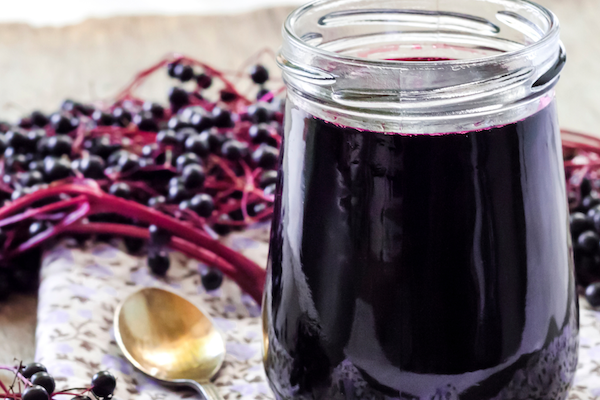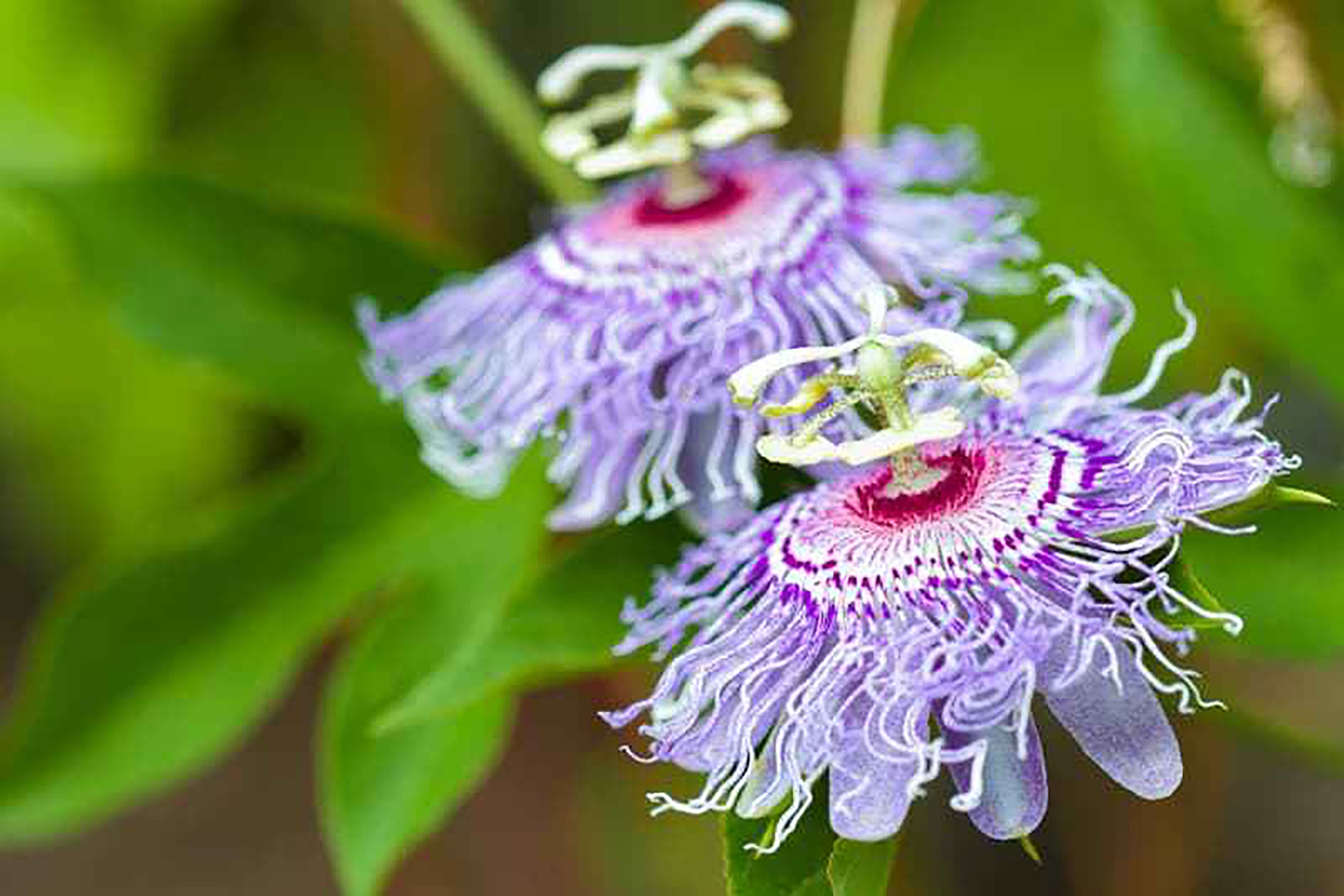Description
Turmeric is an herbaceous perennial that can grow up to 3 feet in height.5 The plant has leaves that are lance-shaped and sheathed to the short leaf stalk.2,5 Its apical false flower is actually a modified leaf (bract) that is white to pink in color.5 Underneath are multiple funnel-shaped true flowers in a spike, surrounding the leaf stalk in a dense cylinder.5,8 The petals are pale yellow to white in color with two fang-like appendages that point downward into the flower, resembling an open mouth showing top incisors.5 Each flower emerges from a tubular bract that is white, white with light green tips, or light green.5 Its arillate seed is an ellipse-shaped capsule with 3 cells.5,8 The root is a main rhizome that is orange in the interior, oblong, and fleshy with small lateral roots.2,5 It has short-branched knobby secondary rhizomes that grow outwards from the main rhizome.2,5
Origins & History
Turmeric is indigenous to Asia, specifically Cambodia, China, India, Indonesia, Laos, Malaysia, the Philippines, Vietnam and Madagascar, off the African Coast.5 It has been introduced in Puerto Rico and Hawaii.9 The plant is widely cultivated in the tropics.5
The herb prefers humid tropical habitats and well-drained soil.2 The harvested rhizome is then broken up into segments.2
Usage of the herb was recorded in the first century A. D. by Dioscorides of Ancient Greece.7 It was noted by Dioscorides and Pliny the Elder, that the root made the saliva yellow once chewed.8 Therefore it was referred to as “al-kurkum”, meaning saffron in Arabic, referring to the color of the saffron crocus threads (stigma) that are used as a dye and spice.8 This led to its botanical genus name of Curcuma.9 Similarly in Sanskrit, the Ayurvedic name is Haridrā, meaning “yellow”.6 Around 657 A. D. in Traditional Chinese Herbalism, the herb was written about in the Xin Xiu Ben Cao materia medica by Su Jing.4 In the Central Pacific, its use has been documented in Hawaiian cooking and herbalism since 1922.9
The striking color also made it sought after for dyeing fabric.7 Turmeric as well as saffron have been used as dyes for the orange-yellow robes of Buddhist monks.7
